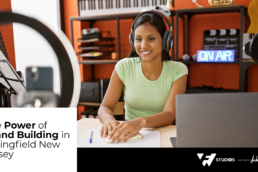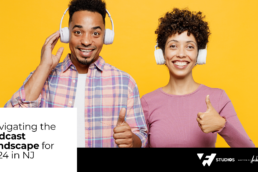Imagine you’re sitting in your favorite cozy chair, a steaming cup of coffee in hand, ready to dive into the ever-evolving world of podcasting. The atmosphere is electric with anticipation. There’s a sense of unlimited potential at your fingertips, waiting to be tapped. That’s the beauty of podcasting. It’s an audio playground for content creators, where they have the freedom to experiment, innovate, and create something extraordinary.
Podcasting is a medium with a multitude of genres and formats. From interviews and narratives to round-table discussions, there’s a podcast for every listener’s taste. But as a podcaster, how do you choose the right format for your show? And, once you’ve chosen, how can you optimize your studio setup to achieve the best audio quality? Join me as we traverse the intriguing world of podcasting genres and formats, and explore how to get the most out of your studio setup.
So, let’s put on our audio explorer hats, and begin our journey into the heart of podcasting!
Diving Into Podcasting Genres and Formats
The Interview Format
The interview format is perhaps the most common and straightforward podcast style. It’s like having a cup of coffee with a friend, except that your friend might be a renowned author, a successful entrepreneur, or a fascinating personality from any walk of life. As the host, your role is to guide the conversation, ask probing questions, and provide an engaging experience for your audience.
When it comes to the studio setup for an interview podcast, focus on creating an inviting and comfortable environment for your guests. Invest in high-quality microphones for clear audio, use soundproofing to minimize background noise, and ensure there’s plenty of space for notes, water, and other essentials.
Remember, the key to a successful interview podcast is preparation and active listening. Do your homework about the guest, prepare thoughtful questions, and be responsive during the conversation. Your audience will appreciate the depth and quality of your discussions.
The Narrative Format
If storytelling is your forte, then the narrative format is your playground. Narrative podcasts can take many forms, from investigative journalism and audio dramas to personal stories and historical retellings. The beauty of this format is that it allows you to transport your listeners to a different time and place, immersing them in a world of your creation.
Your studio setup for a narrative podcast should focus on providing high-quality sound effects and music, which are vital in building atmosphere and mood. Think about using a mixer to balance your voice with other audio elements, and consider using different microphones for various effects. For example, a dynamic microphone can give your voice a warm, intimate feel, perfect for dramatic storytelling.
Crafting a compelling narrative podcast requires meticulous planning, writing, and editing. Remember, your voice is the brush, your words are the colors, and the podcast is your canvas. Paint a vivid picture with your storytelling, and your audience will keep coming back for more.
The Round-Table Discussion Format
Imagine gathering with a group of friends or experts in a relaxed setting, discussing a topic you’re passionate about. That’s what a round-table discussion podcast feels like. This format is great for collaborative discussions, debates, or brainstorming sessions, where multiple viewpoints can enhance the listener’s understanding of a subject.
For a round-table podcast, your studio setup should include a high-quality table microphone that can pick up everyone’s voice clearly. You might also consider using individual lavalier microphones for each participant for better audio quality. Ensure that the seating arrangement is comfortable and encourages conversation.
As a host, your role is to guide the discussion, ensure everyone gets a chance to speak, and keep the conversation engaging and on-topic. Throw in a dash of humor, some thought-provoking questions, and a pinch of controversy, and you’ve got a recipe for a riveting round-table podcast!
Optimizing Your Studio Setup: The Final Touch
Crafting Your Sound
The right studio setup can make a significant difference in the audio quality of your podcasts. Beyond the basics of good microphones, soundproofing, and comfortable seating, think about the acoustics of your recording space. Soft furnishings can absorb echo, while diffusers can scatter sound waves, reducing harsh reflections. Experiment with your setup until you find the sound that suits your style.
Don’t forget about post-production. Editing your podcast can remove awkward pauses, eliminate background noises, and ensure a smooth flow of conversation. There are plenty of editing software options available, from beginner-friendly tools to professional-grade software. Take your time to learn and master your chosen tool — it’s an investment that will pay off in the long run.
In the world of podcasting, content is king, but sound quality is queen. A podcast with great content but poor sound quality can turn away potential listeners. So, take the time to optimize your studio setup, hone your sound, and create an auditory experience that your audience will love.
Ankur K Garg
I have built brands that have earned $125MM+ in revenues and I was a pioneer in developing social media influencers in the early 2010s. Currently I am a SDC Nutrition Executive @WeMakeSupplements, Founder of #INTHELAB, Founder of YOUNGRY @StayYoungry, Zealous Content Hero, Award Winning Graphic Designer & Full Stack Web Developer, and a YouTuber.




